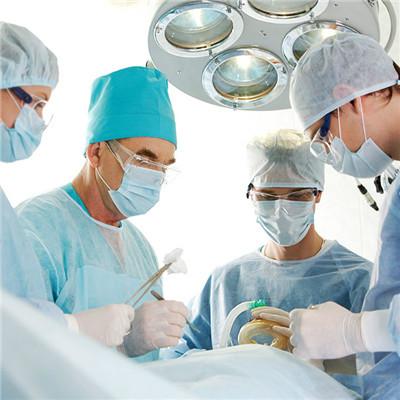How is omental cyst caused?
summary
Omental cysts are rare. The ratio of omental cyst to mesenteric cyst is about 1 ∶ 5, which may be related to the smaller omental area than mesenteric area. The main types of omental cyst are lymphatic cyst, dermoid cyst, hydatid cyst, etc. So how is omental cyst caused?
How is omental cyst caused?
The etiology of omental cysts is unknown, but most of them are caused by congenital dysplasia or ectopic growth of lymphatic vessels. 1. Lymphatics obstruction. A certain segment of lymphatics is obstructed and enlarged to form cyst. 2. The variant cysts of embryonic cells can be formed by the proliferation of the remaining embryonic tissue or ectopic embryonic tissue cells. 3. Traumatic hemorrhage is organized by hematoma, which may be foreign body or surgical injury. 4. Inflammatory reaction pseudocysts are mostly inflammatory reaction and fat necrosis.
The contents of pathological cysts were serous, chyloid or bloody fluid. The wall of true cyst is composed of connective tissue and elastic fiber, lined with flat epithelium or single layer of columnar endothelial cells, with infiltration of lymphocytes and leukocytes. The cyst is filled with light yellow transparent lymph. In the cases with bleeding and infection, the cystic fluid was bloody, green, orange or brown, the cystic wall was hypertrophic, hyperemia and edema, and the intima disappeared. The wall of pseudocyst was also composed of connective tissue and elastic fibers, but without lining epithelial or endothelial cells. The contents of pseudocyst were turbid or bloody. In most patients, the wall of the capsule was adhered to the peritoneum or abdominal organs.
Symptomatic cysts usually have a long course of disease, characterized by abdominal mass or progressive abdominal enlargement. Most of the tumors were occasionally found at night, and there was a sense of abdominal pressure when lying on the back. When complicated with volvulus or intestinal obstruction, severe abdominal pain may occur. Physical examination of abdominal palpable masses, mostly in the upper abdomen, soft and cystic, large range of motion, no tenderness or deep tenderness. The middle and small cysts in greater omentum are well defined. But giant cyst or complications, palpation is not clear, easy to be misdiagnosed as tuberculous peritonitis, ascites and so on. In supine position, the whole abdomen percussion was voiced, only two ribs or waist were tympanic, bowel sounds were heard in the depth, the whole abdomen felt water shaking, but no mobile voiced.
matters needing attention
The etiology of the disease is not clear, and may be related to environmental factors, genetic factors, dietary factors, lymphatic infection and nutrition. Therefore, it is impossible to prevent the disease directly. Early detection, early diagnosis and early treatment are of great significance for indirect prevention of the disease, and can also reduce the incidence of infection complications. For patients who have been infected, antibiotics should be used as soon as possible.















